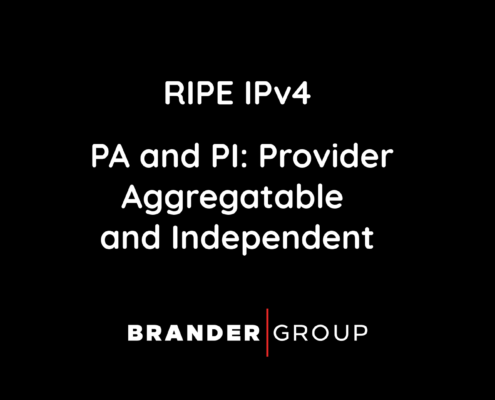Connectivity is Essential
In the world of technology, connectivity has always been an essential aspect of daily life and business operations. Over the past decade, internet usage has skyrocketed, and with the increasing demand for data, IPv4 addresses, and their limitations have become a challenge. IPv6 was introduced as a potential solution, but is it ready to replace the aging IP standard protocol or are there better alternatives?
This blog post provides an overview of the differences between IPv4 and IPv6, outlining the pros and cons of each protocol. Whether you’re a CIO looking to make networking decisions or someone who just wants to learn more about internet protocol, this blog post will give you a deeper understanding of IPv4 and IPv6 and what they mean for the future of the internet.
IPv4 addresses are a popular internet protocol that was developed back in the 1970s. These 32-bit IP addresses created a little under 4.3 billion unique addresses, which were distributed to networks all around the world. Unfortunately, IPv4 addresses’ limitations became clear as the number of devices connected to the internet ballooned to over 25 billion. Additionally, the influx of IoT (Internet of Things) devices added to the pressure of IPv4 addresses.
The Rise of IPv6
IPv6 was developed to replace IPv4 and was launched in 1995 intending to solve the IPv4 problem and create a more significant number of network addresses. It adopted 128-bit IP addresses, which helps to create multiple trillions of more unique IP addresses than what IPv4 could accommodate.
One of the significant benefits of IPv6 is its ability to handle the growing number of IoT devices, which are becoming more and more connected daily. IPv6 is more efficient when it comes to the number of addresses it offers, and it provides a flexible structure when creating subnets. Additionally, IPv6 has built-in security features such as IPsec, which improves data transmission security.
However, transitioning from IPv4 to IPv6 is not without its challenges. Establishing a duo generational network is the first challenge, as this is required before the full adoption of IPv6. Next, organizations need to consider the financial implications of infrastructure upgrades that allow IPv6 and IPv4 protocols to operate. Finally, concerns around network security and the difficulty of optimizing and monitoring the two protocols add complexities to the transitional approach.
Pros and Cons of IPv4
- Pros of IPv4
- IPv4 consumes less memory cache to store and retrieve IP addresses at a faster rate. It provides encryption to your IP address and traffic to maintain reasonable security and privacy of your online activity.
- Since IPv4 is old compared to IPv6, hundreds of thousands of devices are already supported and integrated offering seamless support.
- It is far easier to expand your network buy purchasing more IPv4 addresses than acquiring IPv6, buying new network equipment, moving clients and also having to learn how to properly implement
- Cons of IPv4
- Internet routing is less effective when compared to IPv6 (Internet routing is the process of transferring internet protocol packets through the internet between two endpoints (URL)
- The system management price is high compared to IPv6. The whole system is complex and highly labor focused
- The main drawback of IPv4 is a limitation on the number of addresses. Around 4 billion may look daunting, but considering the number of new users daily, IPv4 will run out of new, unique addresses
Pros and Cons of IPv6
- Pros of IPv6
- Since it is the successor of IPv4, IPv6 is supposed to be faster. IPv6 supports multicast (distribution of one-to-many networks instead of a one-to-one network, which is the IPv4 approach).
- Offers slightly more effective and efficient approach to internet routing traffic.
- IPv6 authentication header is responsible for enabling data integrity, data authentication, and anti-reply protection. This adds a higher level of security.
- The number of unique addresses is four times higher than IPv4. In those situations, there is little to no possibility of running out of IP addresses.
- Cons of IPv6
- It is still difficult to communicate between IPv4 and IPv6 devices. Highly suggested to use a target server, to support both protocols or intervene in the router itself. The best practice is to stack both protocols above one another so the server can run both IPv4 and IPv6.
- Since IPv4 is still widely used, it will take longer to integrate IPv6 into existing or future devices.
- It is not as widely accepted by the internet community. Also only around 40% globally adopted as of June 2023 according to Googles tracking statistics.
- High cost of implementation when you consider new gear, employees learning curves and readdressing of the old networks (if possible)

 2024
2024